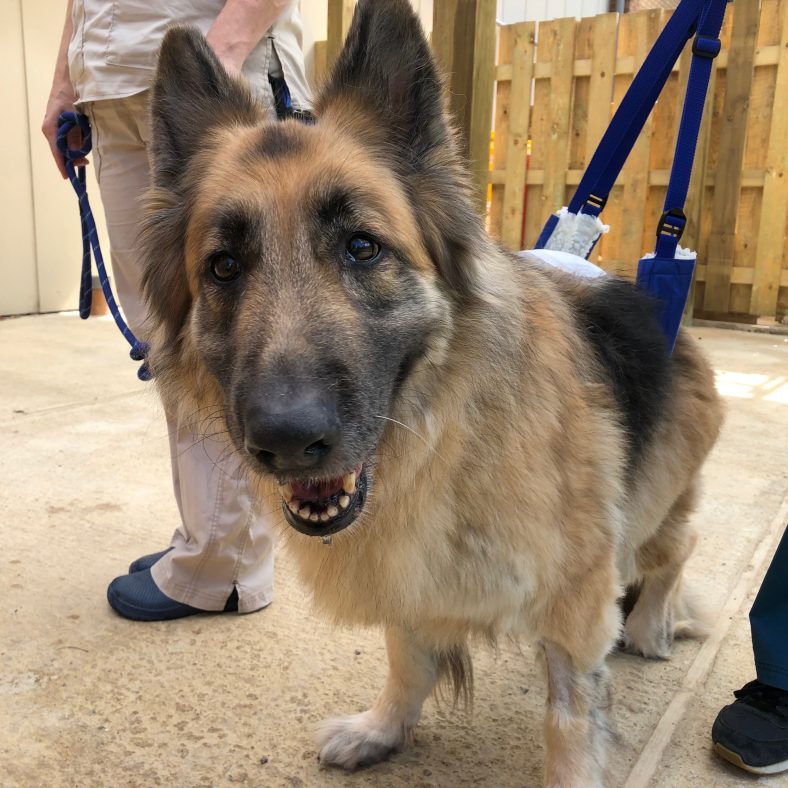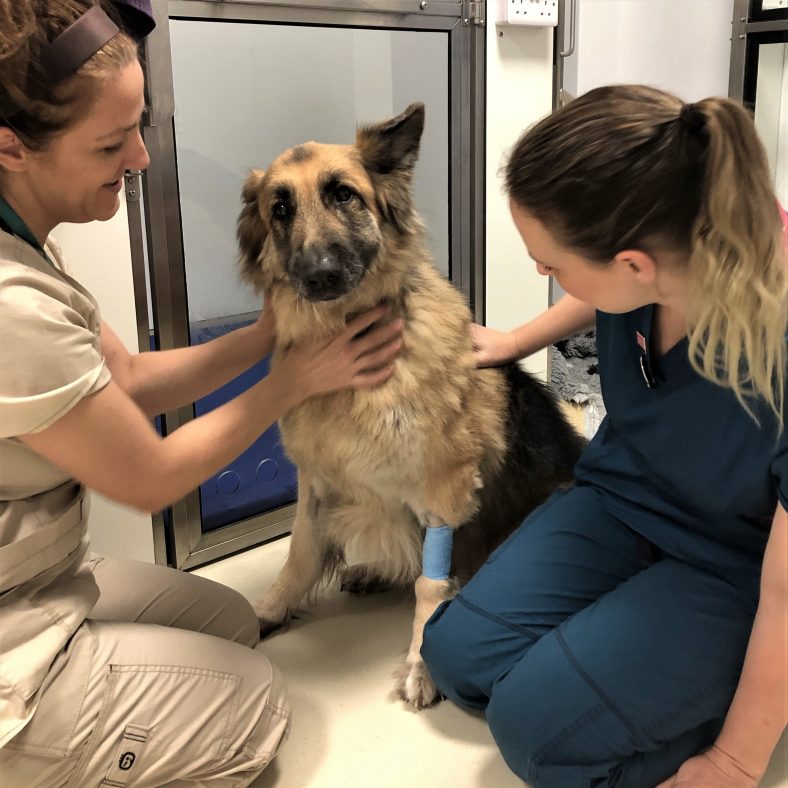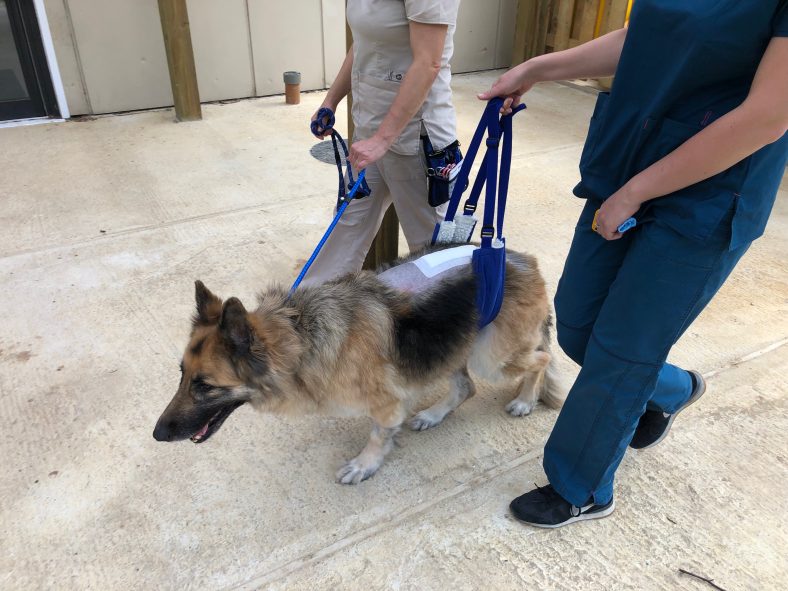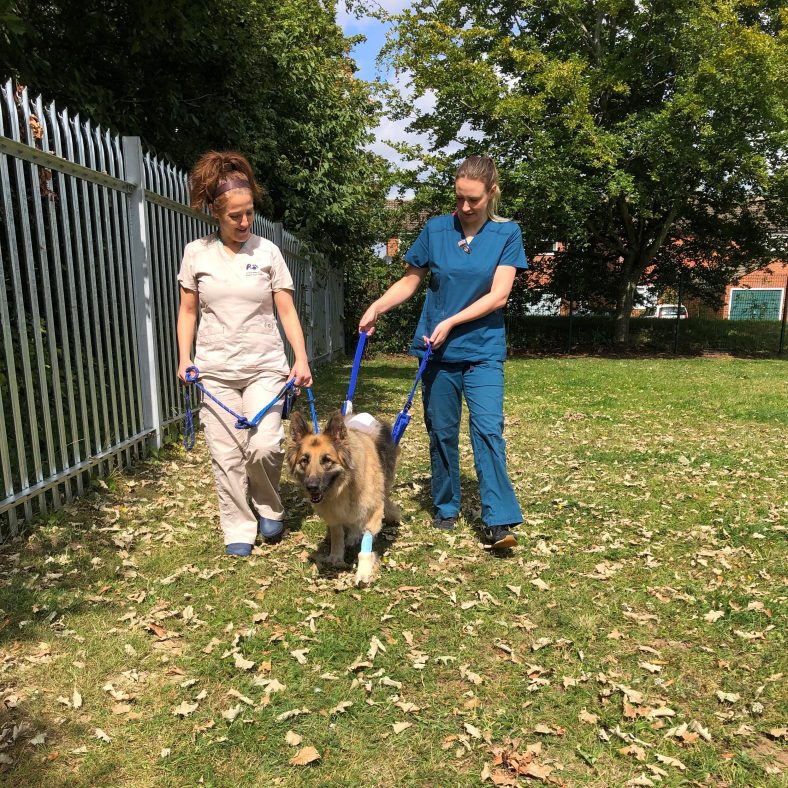Our Community
Putting a spring back in Roxy’s step

Roxy, a lovely 11-year-old German Shepherd, had been doing well despite her advancing years. In the month before she came to The Ralph, she had been reluctant to go for walks and was finding it difficult to get up onto furniture. Perhaps not unusual for a dog of Roxy’s age, but over the course of 24 hours, she became unable to walk or even stand on her hind legs without assistance (a condition known as paraparesis).
Due to her age and the severity of her symptoms, Roxy’s carers were faced with a difficult decision. They did not want to put Roxy to sleep if she had a good chance of being restored to good health and mobility.
Deciding there was a chance Roxy could get better, her carers brought her to our Neurology + Neurosurgery Service. Roxy met Sue Fitzmaurice, our Head of Neurology + Neurosurgery for a thorough physical examination.

Roxy was so reluctant to put any weight on her left hindlimb that the initial concern was she had a problem in the leg itself. Some large dogs can develop bone tumours, or torn cruciate ligaments, both of which can cause considerable pain. Examination of Roxy’s legs made these scenarios less likely. In fact, the pain to her left hind limb was thought to be caused by compression of the nerve root supplying that leg. This is called “referred pain” or “neuropathic pain”.
A neurological examination found that Roxy was weak in both hindlimbs and was not fully aware of their normal position (this is called “abnormal proprioception”). These clues alerted Sue that Roxy’s problem lay within the nervous system and, more precisely, in the spinal cord supplying the hindlimbs.
A common cause of painful spinal cord disease is intervertebral disc extrusion. This is where the central part of the disc bursts through the weakened outer rim of the disc. The extruded material presses the nearby structures and in Roxy, these were the spinal cord and adjacent nerve root.

Roxy post-surgery.
Intervertebral disc extrusions are sadly very common in the dwarf-type (chondrodystrophic) dogs (long back-short legs) e.g. Dachshunds and English bulldogs, and a sudden onset of back pain with or without paralysis is a genuine emergency. These dogs are often young. Roxy was neither a small sausage dog nor in the first bloom of youth so another consideration was that she had a tumour of her vertebra or the surrounding tissues.
An MRI scan of Roxy’s spine put everyone’s minds at rest when a large extruded disc was seen pressing on her spinal cord and nerve root. This was good news, as this is a surgically treatable problem with a good outcome: Roxy was expected to be able to walk again and not be in pain after surgery.
As Roxy’s prognosis was expected to be good with treatment, her carers opted for her to have the spinal surgery. Sue performed a hemilaminectomy and decompressed the spinal cord by teasing the extruded disc material out and off the spinal cord. The surgery went well, a lot of friable disc material was removed, and Roxy’s spinal cord and nerve root were visibly decompressed.

Roxy enjoying a short walk post-surgery, with support from a sling.
After surgery, Roxy made a strong recovery. At first, she required support from a sling whilst she walked outside but quickly improved. She began using her left hind limb again, without the need for support. She regained her coordination and strength, and is once again back on “her” sofa!
Having seen her since for a follow-up, she couldn’t be doing better! Well done, Roxy!
We are so glad that we were able to give Roxy a chance. She has made a remarkable recovery at home with her family since the spinal surgery. If you would like to find out more about our Neurology + Neurosurgery, Anaesthesia + Analgesia, or Diagnostic Imaging services, please click on the links.
Take care,
Team Ralph.
